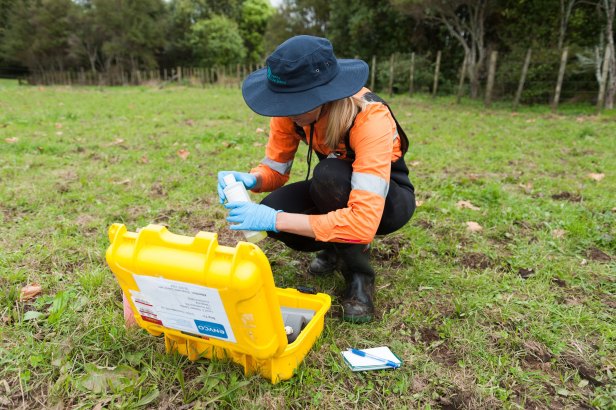Faster, on-site way to detect PFAS
By April Kleer with materials provided by Curtin University | Science Daily | September 15, 2020

Read the full article by April Kleer with materials provided by Curtin University (Science Daily)
“Curtin University research has developed a new and easier on-site method to immediately and accurately detect and measure levels of PFAS, which are persistent environmental pollutants sometimes found in contaminated lands and waters around the industrialised world.
Professor Damien Arrigan, from the School of Molecular and Life Sciences at Curtin University, explained PFAS (per- and polyfluorinated alkyl substances) are potentially harmful chemical materials that were used for a long time in various commercial and industrial applications, including in firefighting foams, some non-stick cookware, stain and water resistant coatings on carpet and clothing, and various paper and packaging products.
‘As a result of their widespread use, many groundwater and soil sites around the world are contaminated with these materials, which are often referred to as ‘forever chemicals,’ because they don’t breakdown or degrade in the natural environment,’ Professor Arrigan said.
‘The only way to prevent them entering the food chain, is to minimise or remove the chemicals from the environment — making early detection a highly desirable part of this removal process.’
Typically speaking, to find out if a site or body of water is contaminated with PFAS materials, soil or water samples must be taken from a site and then taken to a laboratory for chemical analysis, a process which may take several days.
The Curtin research, in collaboration with Universidad Nacional de Córdoba, Argentina, sought to improve this process by using on-site chemical sensors which allow an instant contamination test that immediately indicates which water samples should be collected and sent to a lab for a more detailed chemical analysis.
‘The chemical sensors we developed use electrodes to push ionised PFAS across an oil-water interface, or ‘boundary,’ using special glass membranes with microholes. This process changes the electrical properties of the interface and gives us an electrical current that tells us about the concentration of substances,’ Professor Arrigan said…”
This content provided by the PFAS Project.
Location:
Topics: